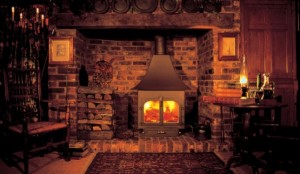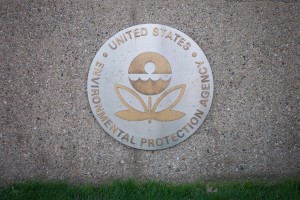 For many Americans, the concept of living ?off the grid? is a novel notion. Surviving and prospering independently without the tether of utilities and other regulated amenities is a liberating prospect and offers a certain sense of security as reliance on municipal and government systems is eliminated.
For many Americans, the concept of living ?off the grid? is a novel notion. Surviving and prospering independently without the tether of utilities and other regulated amenities is a liberating prospect and offers a certain sense of security as reliance on municipal and government systems is eliminated.
But sustaining a livelihood without the technologies and luxuries to which we?ve grown accustomed is no small task. Those choosing to sever ties from community services like water, power and communications must secure their own resources.
Aside from water, which is relatively easy to obtain (even if one were to ?cheat? and stock up on bottled water), one of the most important resources is a sustainable heat source. While heat is a crucial element for both warmth and cooking (and in many cases, sanitizing), it also usually provides light as well; as the primary source of heat is good old fashioned fire.
Thus, for most of us wishing to detach from high society (whether for a week at the cabin or a permanent settlement off the grid) turn to our trusty old friend, the wood burning stove. It?s a basic, tried-and-true instrument of survival, even for modern Americans.
Even citizens who are perfectly happy in their ordinary boring homes with central heat and electric lighting won?t ditch their wood burning stoves since they?re so very handy in a pinch (such as a power outage). Regardless of who you are, where you live in the U.S. or how much (or little) you rely on traditional amenities; chances are you can benefit from that soot-laden hunk of iron.
Speaking of soot, that?s the focus of our story today, and coincidentally also the focus of recent regulations from the Environmental Protection Agency (EPA). In the past, we’ve reported on how EPA regulations are impacting the power generation and energy industries, but now it seems that everyone is susceptible to penalties for noncompliance (at least those of us daring enough to use a wood burning stove).
Along with Obama?s Clean Air initiative (ObamaAir), leveraging the EPA for setting guidelines and enforcing compliance, came a litany of new regulations. The one most directly affecting the use of wood burning stoves is a reduction to the limits for airborne fine-particle pollutants from 15 micrograms to 12 micrograms per cubic meter of air.
While 3 micrograms may not sound like much, the new lower limit means that smoke from these stoves is now in an unacceptable range of pollution according to the EPA. It is possible, therefore, that you could literally be committing a crime by setting your furnace logs alight.
Awareness regarding the regulation is relatively low, especially to those hardcore off-grid survivalists and ?Preppers? living in the wilderness who, incidentally, are likely the most consistent ?offenders?.
As such, the EPA has launched an online resource in order to raise awareness on the law, pitch the benefits of their regulations and offer resources through which to procure an ?approved? wood burning stove so that you can abate your pollutants into the less catastrophic range of 12 micrograms.
The EPA-sponsored website, dubbed ?Burn Wise?, insists that Americans toss their old pollution-spewing stoves in exchange for an EPA-approved version while endearingly calling it an ?upgrade?. Unsurprisingly, the measures have met with hostility among many citizens who consider the regulations ?ridiculous?.

While masquerading under a guise of a ?trade-in? program, the EPA?s push for citizens to jump on the stove-swap bandwagon is largely one-sided as they insist that the old stove not be resold or reused in anyway. Instead, the offending equipment must be scrapped or ?otherwise rendered inoperable?. You are essentially tossing out a perfectly good furnace and replacing it with one that won?t get you fined or otherwise harshly penalized.
The EPA does, however, offer a convenient resource in the form of a comprehensive list of ?EPA Approved? Wood Stoves. Furthermore, the EPA cites compliant specifications required of wood stoves to which manufacturers and retailers must adhere. Here?s a sampling of that info from the EPA website so that you can closely inspect the offerings when you?re out stove shopping:
?An EPA certified wood stove or wood heating appliance has been independently tested by an accredited laboratory to determine whether it meets the particulate emissions limit of 7.5 grams per hour for noncatalytic wood stoves and 4.1 grams per hour for catalytic wood stoves. All wood heating appliances that are offered for sale in the United States are subject to the New Source Performance Standard for New Residential Wood Heaters under the Clean Air Act and are required to meet these emission limits. An EPA certified wood stove can be identified by a temporary paper label attached to the front of the wood stove and a permanent metal label affixed to the back or side of the wood stove.?
So there you have it folks, the EPA is cracking down on wood-burning stoves. It seems silly to think that these measures could be effectively enforced, but they are indeed serious. One commenter pointed to a strong likelihood that home owners insurance could represent a catalyst for such enforcement by reserving outrageous premiums for those rebels clinging to the old ways of wood burning.
Again, these mandates will most largely affect those living off-the-grid and so-called ?Preppers? who rely so heavily on the stoves simply for survival. At least we still have campfires?for now. And besides, when it comes down to brass tacks, how much leverage will the EPA really have during a zombie apocalypse anyway?


